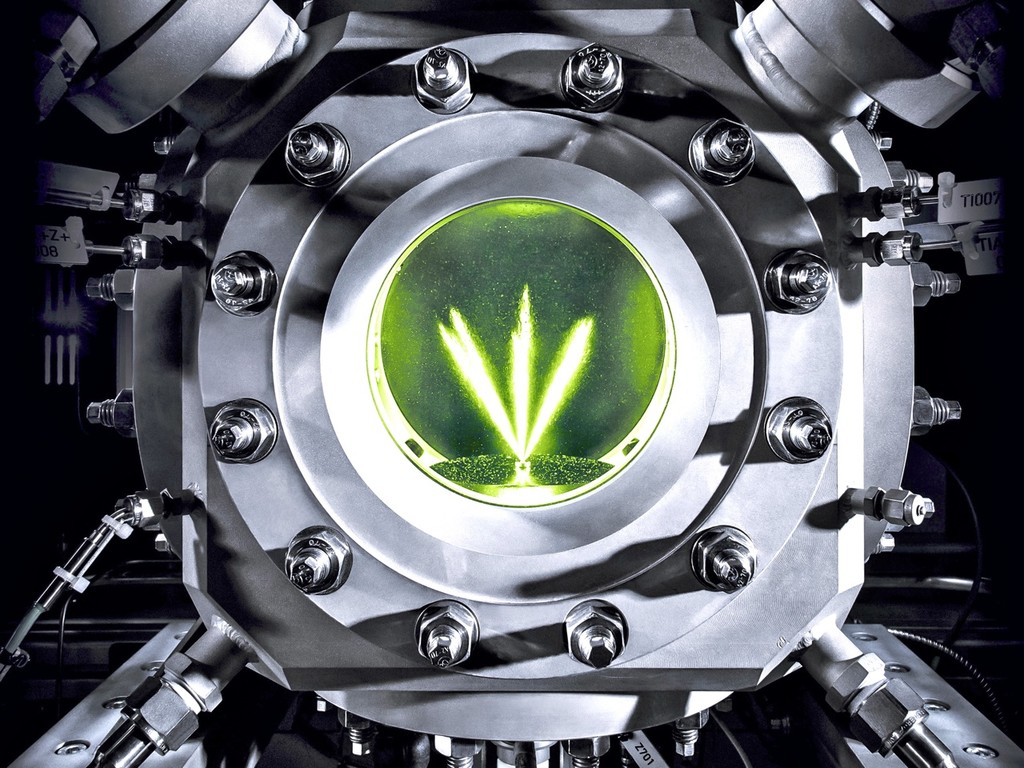Diesel and water do not get along. Even less inside an engine. But there are solutions to produce energy that have managed to bring these two matters together. Today we are going to talk about e-diesel, a synthetic fuel based on raw materials such as water and CO2 from the atmosphere. In other words, diesel produced by components as easy to find in nature as water and “air”. An alternative to the fossil diesel found in most cars today.
The e-diesel has its origin in 2014, from an alliance between the German manufacturer Audi and the technology company Sunfire. It is a fuel that does not generate CO2 emissions, but it is also still a diesel, so it works in conventional engines. Here we explain what e-diesel is based on, what its advantages are and what challenges it has to become a valid alternative to fossil fuels.
What is e-diesel based on

As we explained, e-diesel relies on water and CO2 to produce a hydrocarbon. The production of this synthetic diesel is possible by obtaining CO2 from the atmosphere, which in combination with hydrogen from water allows to create synthetic diesel through an electrolysis process.
The ‘e’ in e-diesel should not be confused with the one commonly used in biofuels. In this case it is a synthetic fuel.
Therefore, three elements are needed: hydrogen, carbon dioxide and electrical energy. The first element is obtained from water, the second from the air itself captured through filters and the third is produced in the factory by renewable energies such as solar or wind.
The first step is to heat the water above 800ºC to separate hydrogen from oxygen. It is the electrolysis process, where hydrogen is separated from oxygen. The first remains in the reactor, while the second is returned to the atmosphere.

Second, CO2 is incorporated into the reaction. This is obtained directly from the air using direct capture techniques. CO2 is mixed with hydrogen and reacted at elevated temperature and pressure to achieve the desired mixture in liquid form. The combination is known as e-diesel or “blue crude. “With the liquid created, a refining process equivalent to that of traditional diesel is finally carried out so that it can be used in different cars.
An emissions “neutral” fuel

The most obvious advantage of e-diesel is its use of “neutral” elements. Unlike the limited fossil components, water and CO2 are abundant resources in nature. But in addition, e-diesel is theoretically also an ecological fuel.
The key to being respectful with the environment is that e-diesel does not increase CO2, the main responsible for the greenhouse effect. According to its own design, e-diesel helps to reduce it, since through filters CO2 is obtained directly from the air, in a greater proportion than that which is subsequently generated in combustion .
Other advantages of this fuel is that it is a technology adapted to today’s engines, so it does not require vehicles to be offered in specific versions as it does with gas or electric motors.
Audi has the capacity to produce 400,000 liters per year

At the end of 2014, Audi joined forces with the Sunfire company to start producing e-diesel. The pilot project started at a Dresden plant. The work paid off, and in 2018 the German carmaker announced its plans to expand e-diesel production.
Through an agreement with the electrical producers Ineratec GmbH and Energiedienst Holding AG, a new plant was created in Laufenburg, in Canton Aargau (Switzerland) for the production of synthetic fuel.
This facility has a capacity of around 400,000 liters per year, a quantity much higher than that of the initial pilot but very far from the figures currently produced for other fuels.
In 2015, Audi was successfully testing its e-diesel in an Audi A8 3.0 TDI. However, the company maintains projects in other fuels such as e-gas at the same time. In fact, together with the company Global Bioenergies SA, they also work on e-gasoline. Various “fuels of the future” that promise great benefits but also face multiple challenges.
In 2021, Mazda announced its incorporation into the eFuel Alliance, an association whose objective is to promote neutral fuels, following Audi’s e-diesel proposal. Also in this line are Porsche and Siemens Energy, with the promise of producing up to 120,000 liters of eFuels in 2022.
A promising fuel with significant limitations
And it is that if the e-diesel is ecological and above it works in conventional engines; Why has it failed to attract more investment? This is because it also presents several difficulties.

First is the cost of production. Audi hasn’t disclosed the cost, but it can be anticipated that the cost of e-diesel is considerably higher than that of extracting oil. It is only necessary to see the size of the infrastructure necessary to produce a few liters.
On the other hand there is the question of energy efficiency, a key aspect of any fuel. And here some experts like Robert Rapier of Energy Trends believe that this e-diesel is not efficient enough to be viable on a large scale and commercial level.
The International Council of Clean Transportation (ICCT), explained in mid-2020, that synthetic fuels were not the most effective solution to reduce CO2 emissions, the path of betting on electric cars being clearly more effective.
Recently, Audi has announced the stoppage of its future combustion engines due to the impossibility of adapting to the future Euro 7 standard. Audi’s current plans with e-diesel are unknown. A plausible alternative although perhaps not enough to change the fate of diesel.